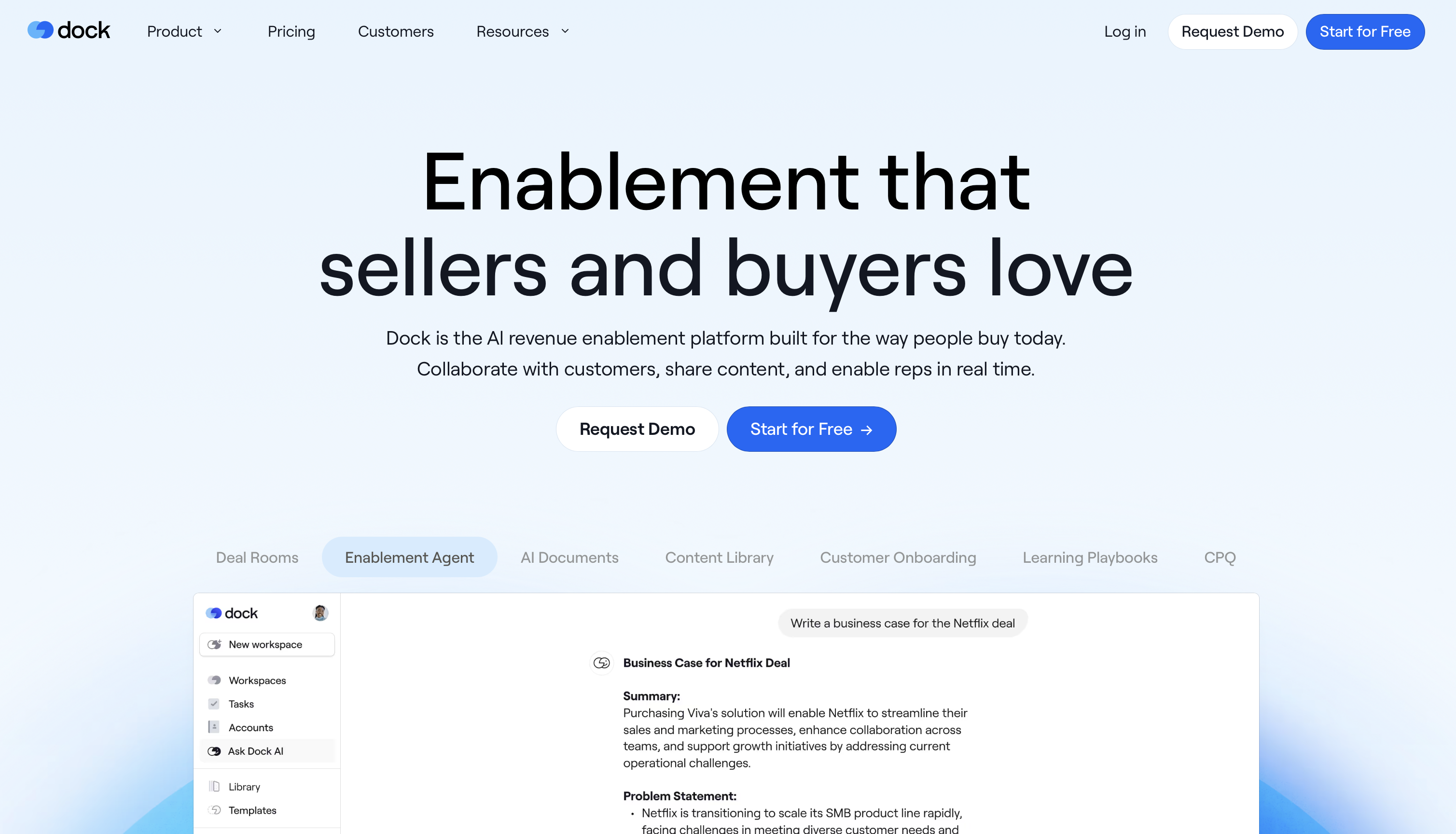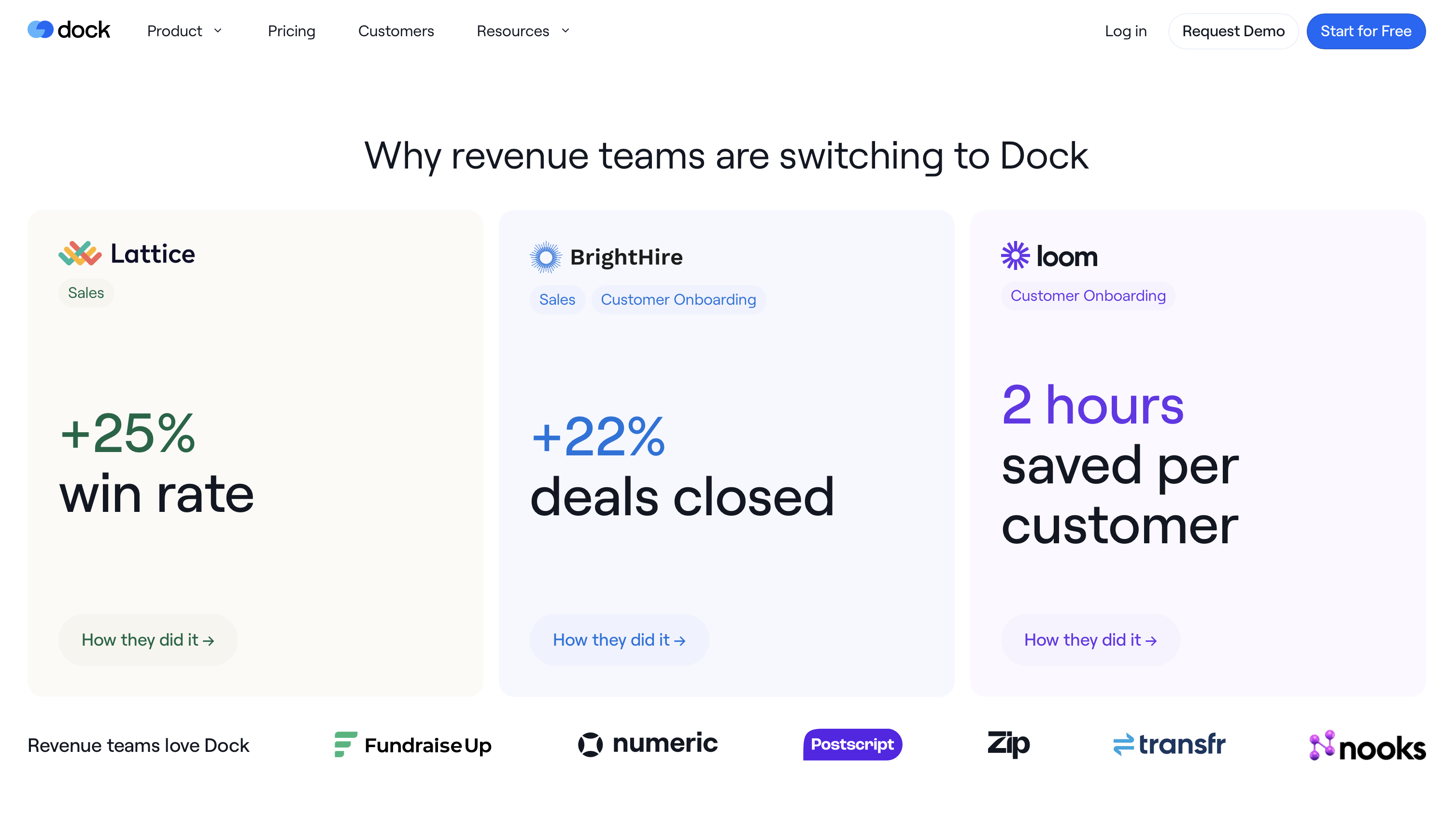
Dock’s homepage leads with “switching to Dock” messaging, positioning itself as a replacement in a mature market. The idea is reinforced by three case study blocks that include different measurable outcomes from well-known brands.
Based in San Francisco, Dock was co-founded in 2021 by Victor Kmita, Luc Chaissac, and Alex Kracov. While at Lattice, they built a Webflow prototype that eventually inspired Dock, which went on to become a well-known revenue enablement platform.
SaaS companies use the area just below the homepage hero to display customer logos or share generic metrics. Dock uses this prime real estate differently.
There are two things that caught my attention.

First, right after the hero section, the headline reads: “Why revenue teams are switching to Dock.” This isn’t “Why revenue teams love Dock” or “Why revenue teams choose Dock.”
It’s “switching.” This language assumes buyers already have a solution and positions the decision as replacement, not first-time adoption.
Second, the section includes three case study blocks, each presenting a different value proposition:
Each case study includes the company logo, their use case, the quantified result, and a “How they did it” link to the full story.
Why this works
These two homepage choices work great together. Framing the narrative as “switching” instead of “adopting” makes sense because Dock operates in a mature market.
Revenue enablement tools exist. Sales teams already use something, whether it’s a dedicated platform, a patchwork of tools, or shared folders. The question isn’t “Should we adopt this category?” It’s “Should we switch to Dock?”
Placing three case studies immediately after the hero reinforces that positioning. In a mature market, buyers have already seen the same promises and benefits a hundred times. They don’t need another abstract value statement. They need proof that switching pays off.
By surfacing measurable results from well-known companies right after the headline, Dock speaks directly to a skeptical buyer. Each case study becomes evidence that switching isn’t risky and that it delivers outcomes for teams like theirs.
The logo strip at the bottom reinforces “Revenue teams love Dock,” but the heavy lifting happens above: specific companies who switched, specific results they achieved, specific value props demonstrated.
This sequencing flips the usual order of persuasion: instead of promise, then proof, Dock starts with proof, then expands.
